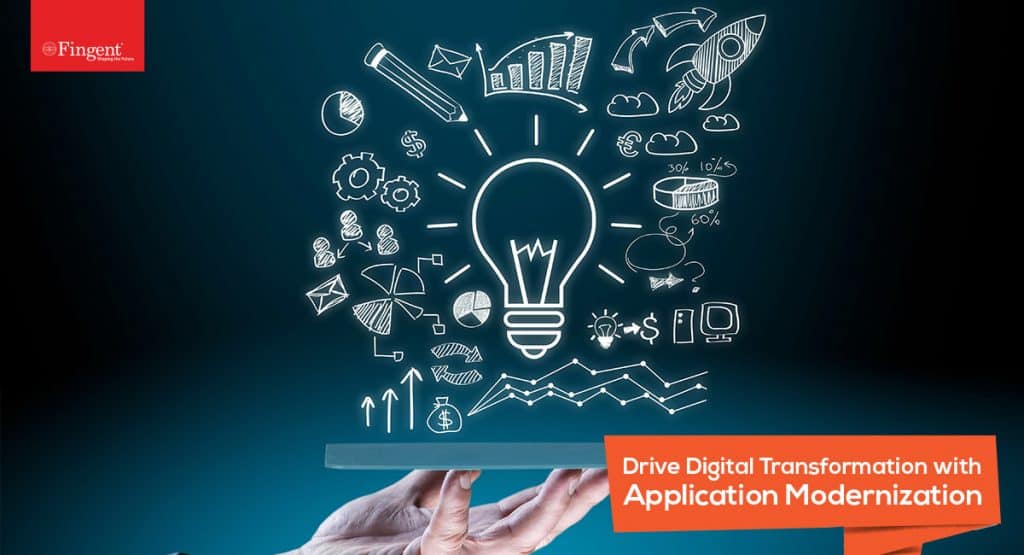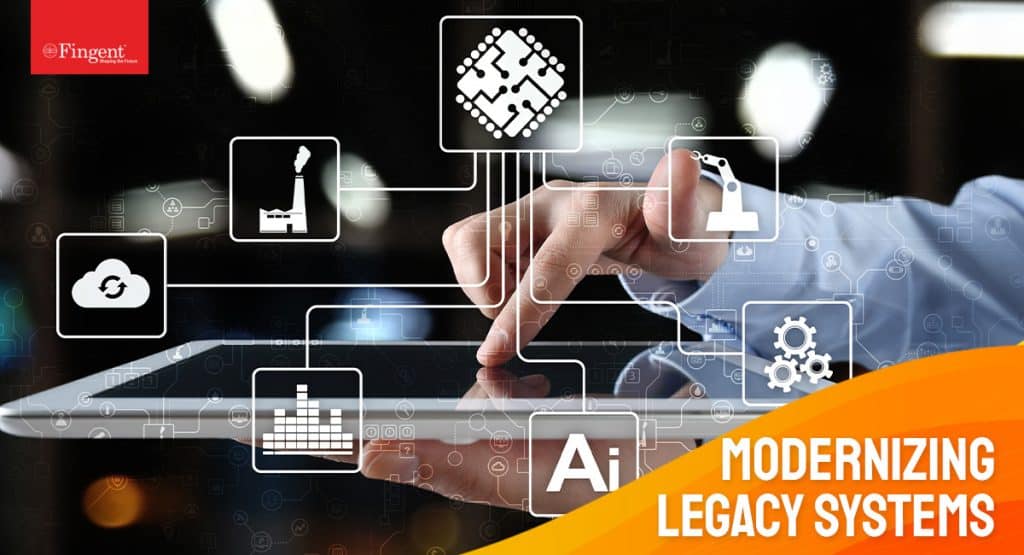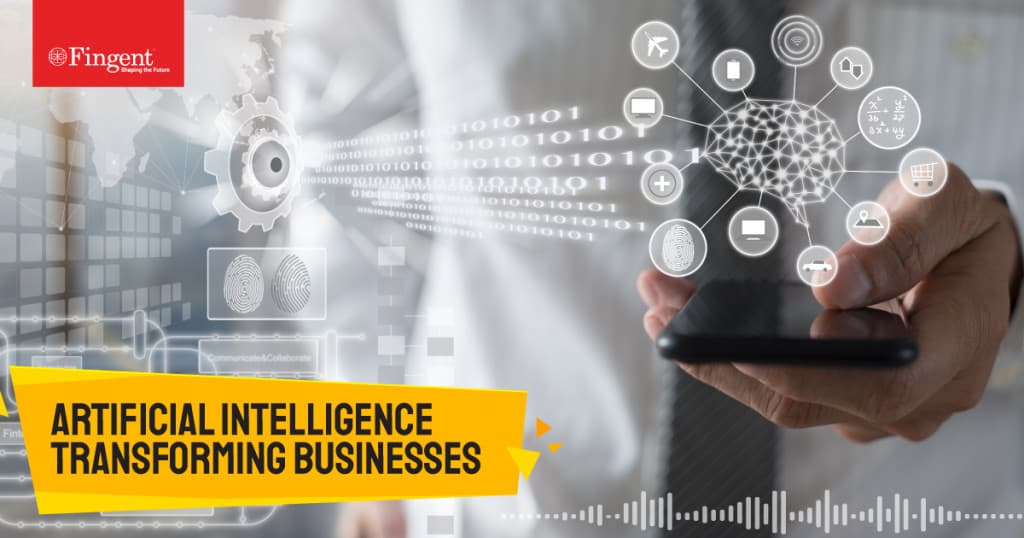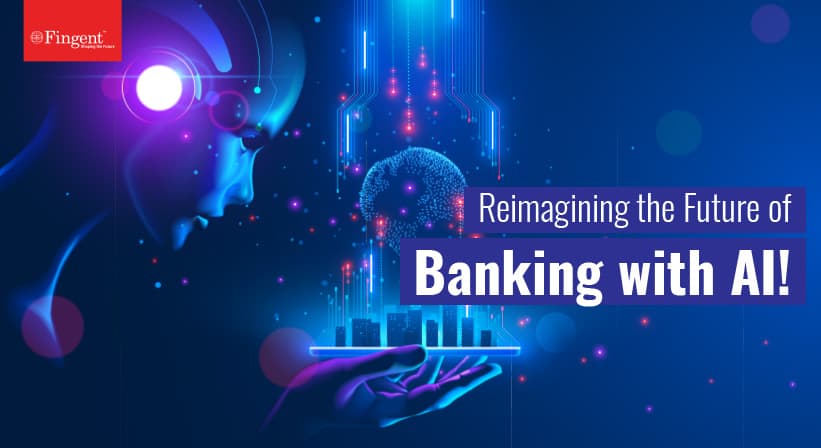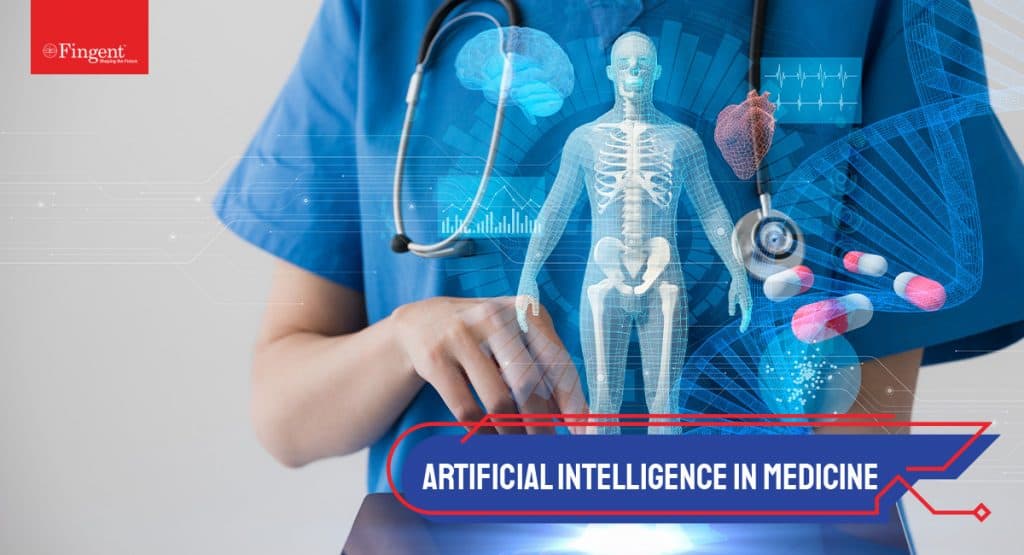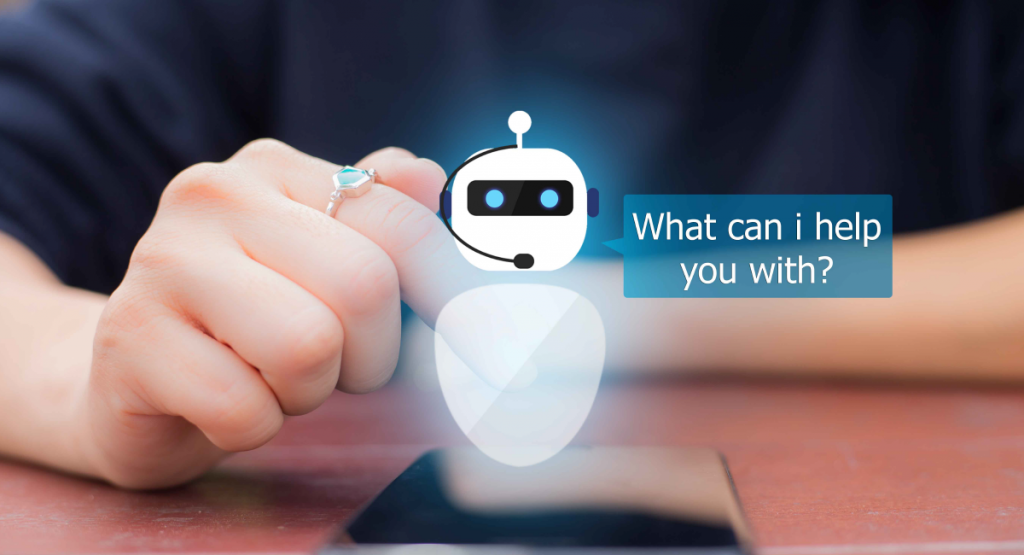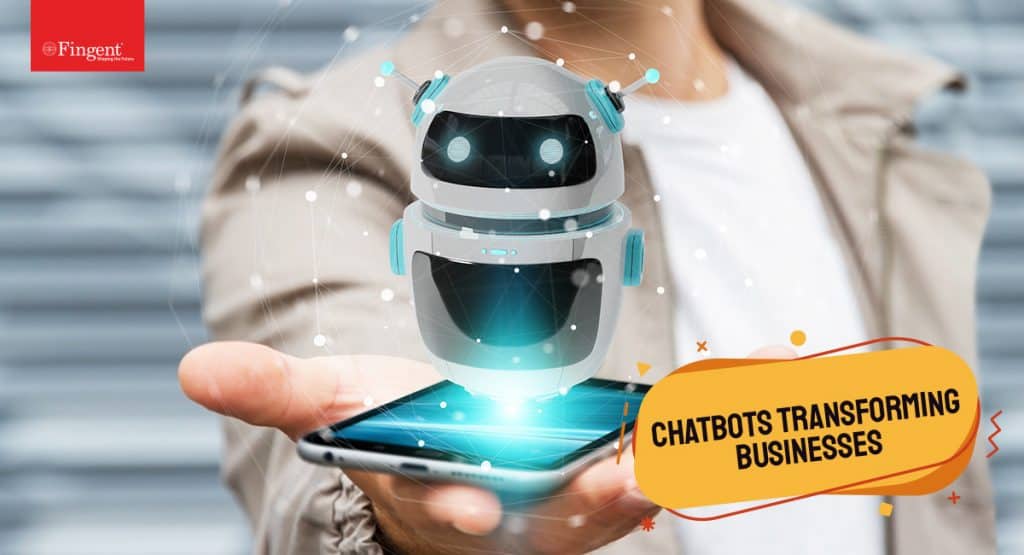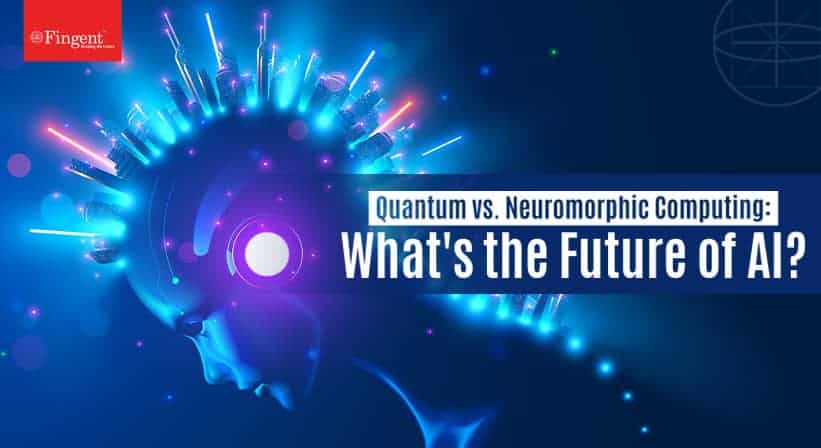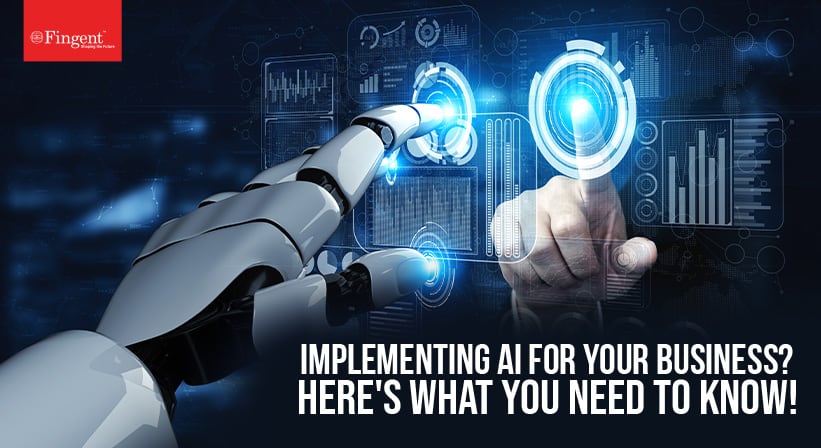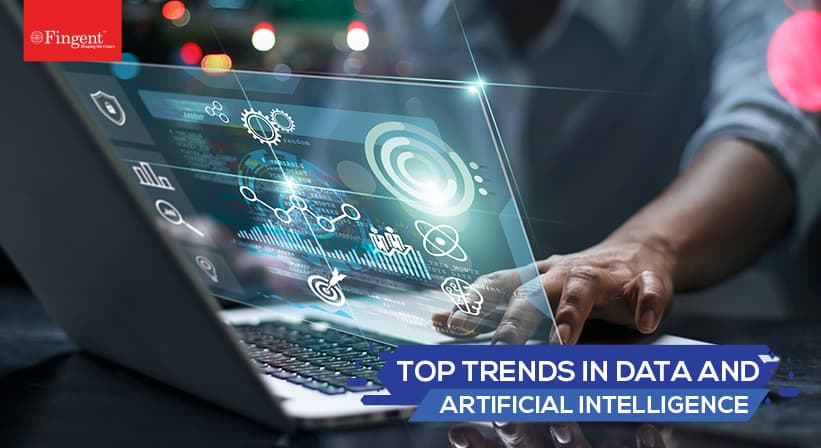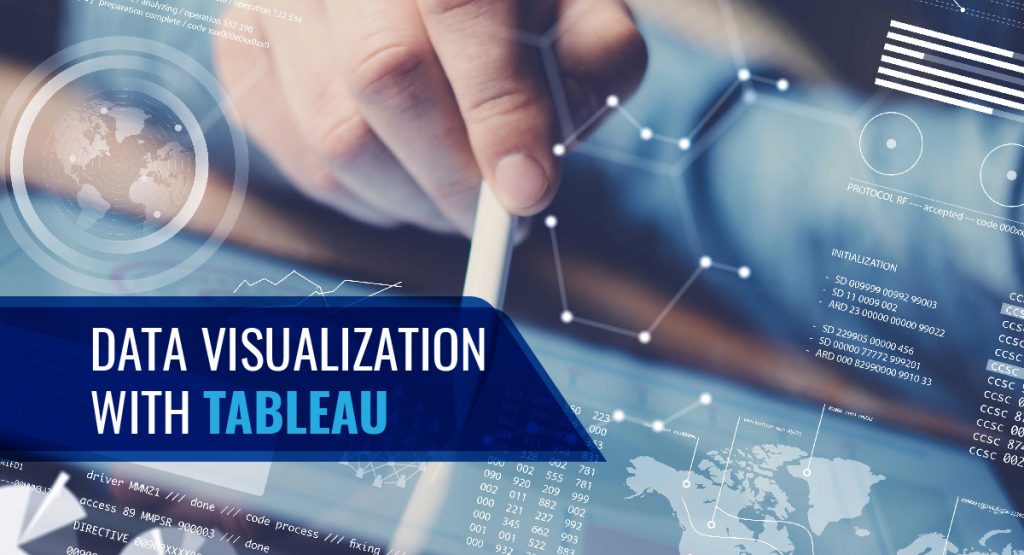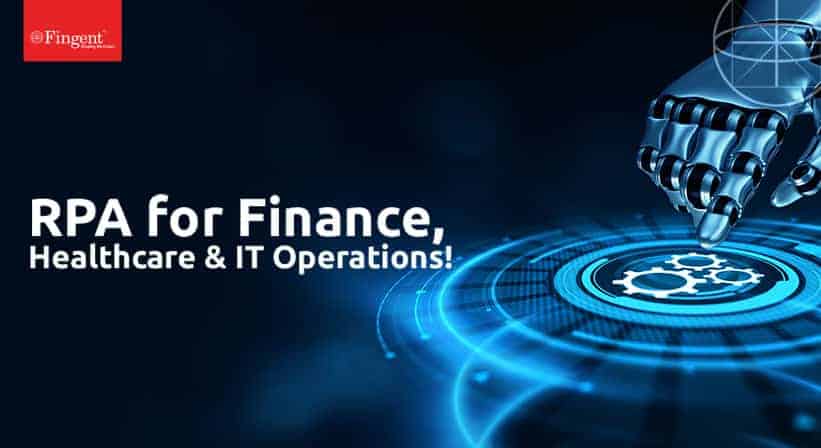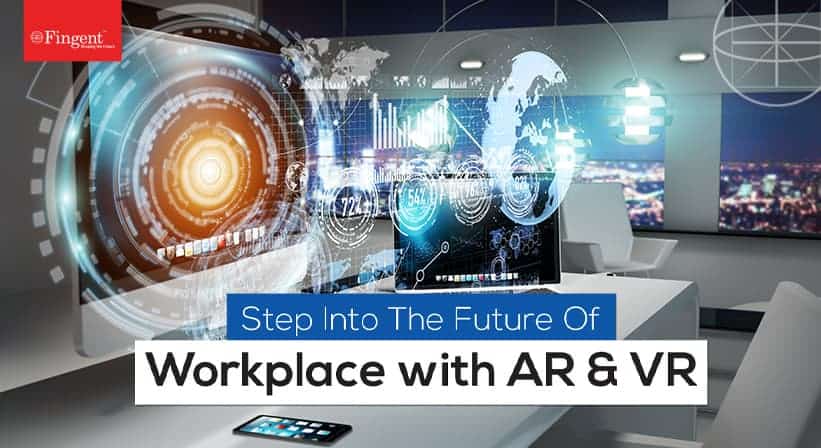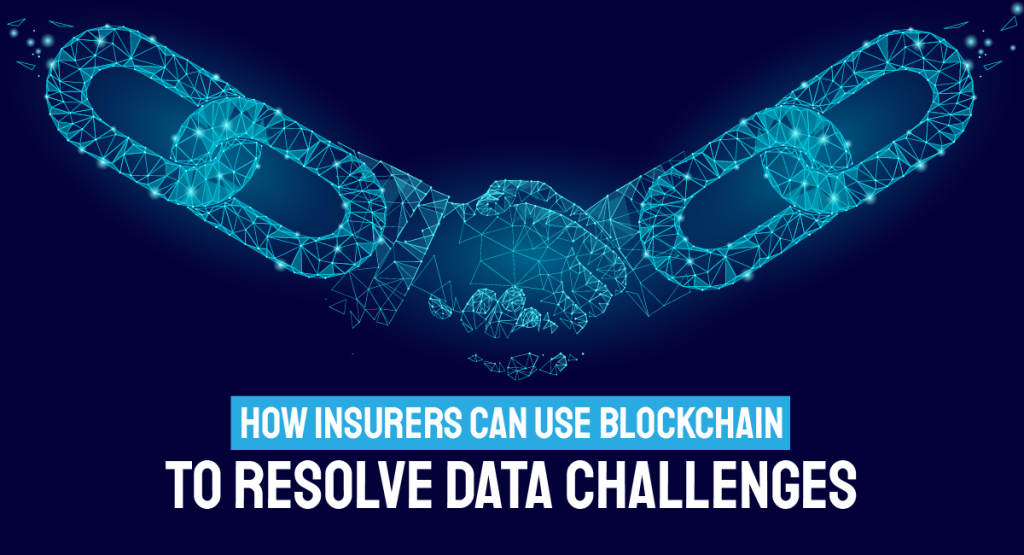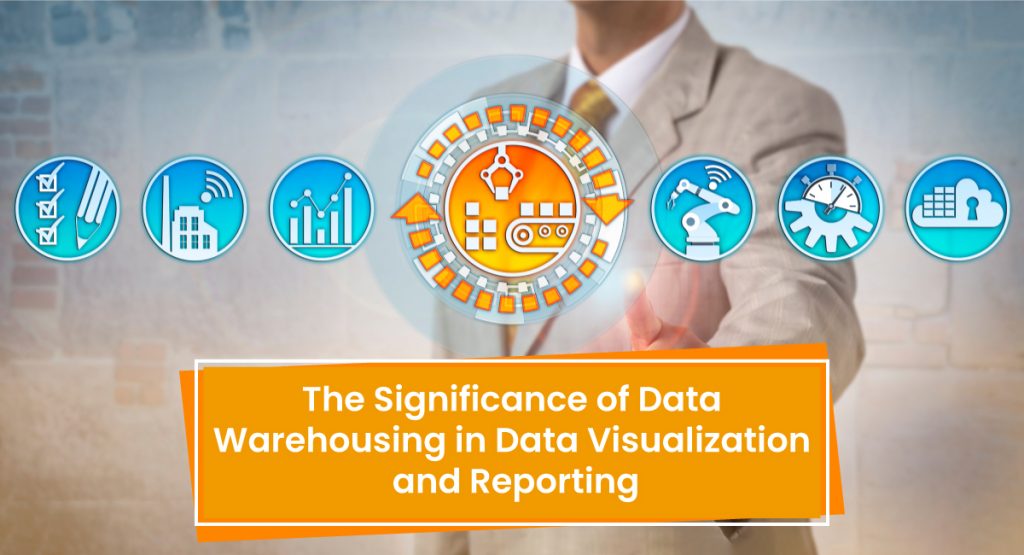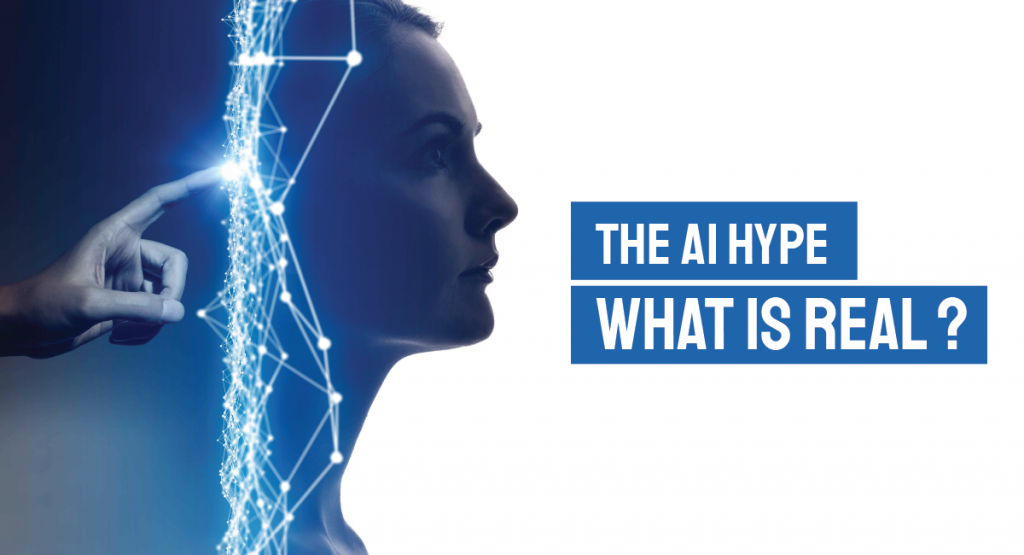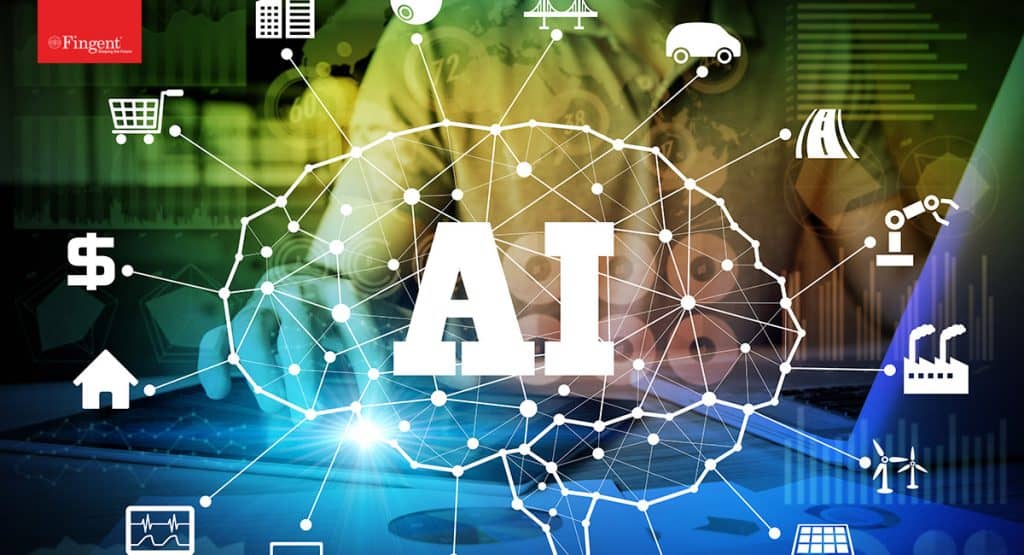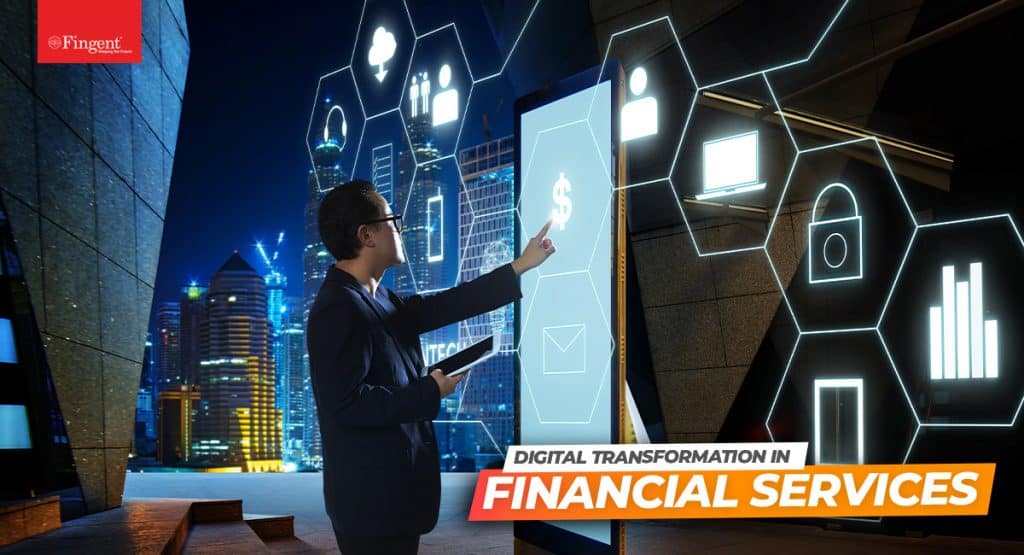Tag: AI
Old is gold … but is it? There are some things that get better with age of course, but when it comes to software, it’s a hard NO.
Business after Covid is not the same as when you started it. So, using legacy software to run your business is like using bullock carts for transportation even when bullet trains are available.
True, there are some systems that are hard to be replaced. On the other hand, there are some that need to be modernized or even completely scrapped. One of these is legacy software. Nevertheless, the modernization or replacement of legacy software is not always defined by its age. It might be that it is no longer relevant to the current business strategy and goals. When such software becomes difficult to maintain and improve, it is time to pivot to the platform ecosystem.
This article discusses the benefits of pivoting your legacy software into a platform ecosystem. Before that let’s understand when and how a company should consider pivoting to the platform ecosystem.
Let’s start by understanding what a platform ecosystem is.
Read more: 5 Ways Application Modernization Enables Your Business to Grow and Reap ROI During a Pandemic
What Is Platform Ecosystem?
A platform ecosystem is a connected system of companies that share large amounts of data with a common goal. When executed well, it has a massive impact on solving societal challenges successfully establishing and launching a viable ecosystem.
When Should a Company Consider Pivoting to AI-enabled Platform Ecosystem?
Legacy software may have been useful in the past. Today, you no longer see enough ROI. The longer you allow it to interfere with your business, the more resources you will have to devote to keep your current system functioning.
After all, any company would expect to profit while ensuring to invest in the right places. Recognizing the obvious downsides will help you understand when and why you must pivot to the platform ecosystem. Here are three examples that increase the cost of running legacy software:
1. Maintenance cost
Overhead cost: When your legacy software needs constant patching and repairs, your overhead costs can increase exponentially.
Human resource: If your team spends most of their time on maintenance, they will be distracted from higher-value projects that can contribute to increased ROI.
2. Cost of Integration
Integrations: You may feel tempted to look for workarounds that allow your system to work with current software and hardware. This can lead to reinventing your entire system. Essentially, you will be left with a lot of new patches on the old system that can increase your integration cost and maintenance costs.
Equipment: You will have to retain some of the old software and hardware because of compatibility issues. Maintaining such old equipment also can increase your cost in terms of money and human resources.
3. Cost of brand image
Customer retention: Because legacy software may become cumbersome and slow for today’s fast-paced customers, they may move on to your competition. These customers may include some of your loyal customers who lose patience. Gradually, such loss of customers will diminish your market share.
Brand reputation: Cumbersome legacy software can change the way your existing customers and the general public view your brand. Remember, if it costs your reputation, it will cost your business!
Read more: Why modernize your legacy systems. What is the best approach?
Steps to Pivot Your Legacy Software
Steps to pivot legacy software to a platform ecosystem vary from business to business. But there are common threads in how they can approach this journey. The companies wishing to grow with AI-enabled platforms must carefully assess and plan the transition. Doing so will ensure long-term success.
1. Assess and document your current software
Analyze and document how your current software fails to meet your business needs. Such analysis will help you understand what you need.
Create a journey map to visualize the UX and CX of your legacy system. Find out how your partners, customers, and stakeholders are using your current system.
This is a preliminary step so do not rush through your assessment. A thorough review now can provide you with a clearer picture of your journey and save you much time and resources during the journey.
2. Find out the right strategy for your organization
Some of the strategies you could consider are replace, rebuild, rehost, and re-platform. The right strategy depends on various factors including the expected ROI, the timeline, and more. It is important to get your stakeholders involved in this step.
Read more: Legacy Software Modernization: For Organizational Survival!
3. Access to partners’ data
Access to partners’ data plays a huge part in driving value. Ensure to include access to partners’ data. Also, ensure this relationship comes with the ability to use AI models like customer matches and recommendations.
4. Create an interface and a timeline
Ecosystem partners need access to AI data and decisions. This is made possible by creating an API architecture. API network allows providers to interface with the company.
When mapping out your journey, factor in the time you will need to locate any other resources and the current projects your team is working on.
5. Identify and gather
Most decisions are made by AI. Hence, Identify the key decisions that you would want AI to make and then use that data to train the models.
6. Design and implement a smooth process
The frictionless platform model can simplify the process for your customers. Work with your partners to design and implement a seamless process that meets your customer needs.
7. Data is power use it wisely
The machine learning process will continue to improve as they make decisions, and they will get better at predicting or recommending. Retrain them as soon as you source new data. You can also train them when you notice that they are not doing their job very effectively.
8. Begin implementing your project plan
Once you start implementing your project plan, ensure to keep all lines of communication open and clear. Sharing information across the team about changes will help prevent problems.
Advantages Of Pivoting to Platform Ecosystem
The primary value of the platform is to grow your business. It is also useful for gathering data to train AI models. Each new member of the ecosystem provides more value to the network and more data. As result, you will have better AI models.
Data powers AI-enabled decisions in order to quickly and efficiently process claims for your customer. In a platform ecosystem, companies work together towards a common goal. They create value for each other and their customers. Clearly, new technology delivers a bigger return than keeping the existing software. At Fingent top software development company, we work with our clients to make this transformation smooth and seamless.
Give us a call and allow us to help you effortlessly pivot your legacy software into a platform ecosystem.
Stay up to date on what's new

Featured Blogs
Stay up to date on
what's new



Talk To Our Experts
The popularity of edge computing and artificial intelligence (AI) has risen in recent years due to the widespread adoption of mobile technology and the Internet of Things (IoT) by various industries. The Linux Foundation’s State of the Edge Report 2021 predicts that the global market capitalization of edge computing infrastructure would reach $800 billion by 2028. If edge computing garners a wider attention span, the number of enterprises investing in AI is also growing year over year. According to the State of AI 2021 Report, the global AI funding witnessed a whopping 108% increase in 2021. More than 54% of the organizations surveyed by McKinsey in 2021 said that they have adopted AI in at least one function.
Individually, both AI and edge computing help businesses in incredible ways and hold immense potential for future development. Many forward-looking organizations are investing in these two technologies as part of their digital transformation journey. “Two heads are better than one”, goes the saying. True to this, many enterprises and technology champions are discovering new opportunities by combining edge computing and AI, or Edge AI. In this blog, we’ll see how edge computing and AI are being put to work together and discuss some use cases that will take AI applications to the edge.
Read more: Future-proof your business with 5G, edge computing and cloud
What is Edge Computing?
Edge computing refers to a distributed computing framework that brings the deployment of computing and storage resources closer to the data sources, such as local edge servers or IoT devices. By bringing enterprise applications closer to the data sources, edge computing offers a multitude of business benefits; including faster data processing and insights generation, better response times, and enhanced bandwidth availability.
In edge computing, all your device-generated data is processed and analyzed close to the source where it’s created. By preventing your data from traveling over a network to a centralized or cloud data center, edge computing reduces latency and improves bandwidth availability.
Example: Electric vehicles (EVs) leverage edge computing for data aggregation and insights generation, which help optimize charging stations and monitor the health of EV batteries.
Read more: 9 examples of artificial intelligence transforming business today
What is AI?
Artificial Intelligence or AI refers to machine intelligence, where a computer-controlled (software-programmed) machine simulates human intelligence to perceive its environment and take corresponding actions that help the machine achieve its goals. AI uses machine learning and deep learning techniques to churn robust input datasets (labeled training data) and enable rapid problem-solving.
The content recommendation systems used by Amazon, Netflix, or YouTube and Google’s advanced web search engine are some of the leading examples of AI today. The growth of artificial neural networks and deep learning technologies enable AI systems to process massive amounts of data at an incredible pace and predict future states with exceptional accuracy.
AI-powered applications command a larger share in today’s enterprise landscape. AI helps banks, insurance companies, and financial institutions with fraud detection. AI is being used by conversational bots to enhance customer service. Smart assistants like Siri and Alexa leverage AI to improve customer experience. Hospitals and healthcare providers use AI-embedded applications for making clinical decisions and delivering remote patient care.
Case Study: MUSA, Fingent’s AI-powered virtual assistant minimizes day-to-day workplaces struggles related to PeopleOps and DevOps. Read Now!
Edge AI: The Next Wave of Enterprise Digital Transformation
AI applications give the intended results by relying on seamless data transmission and computation of complex ML algorithms. Edge computing helps move AI systems close to the source where the data is generated. When AI computation is done at the edge of the network, next to the data source, it gives more accurate and desired results. This process has given rise to a new computing paradigm: Edge AI.
In edge AI, both data generation and computation take place at the network’s edge, instead of sending and processing data in a faraway cloud computing center. Here, “edge” of the network could connote anything – mobile devices, retail stores, factories, hospitals, medical equipment, traffic lights, autonomous vehicles, and so on.
Read more: Quantum vs. Neuromorphic Computing: What Will the Future of AI Look Like?
Here’s how your business can benefit from the adoption of edge AI:
1. Low-power, offline capabilities
Traditional AI applications require enormous amount of processing and computational power to operate some of the complex ML algorithms. Distance from the cloud servers often affects the deployment of AI systems in remote locations. Edge computing helps overcome this challenge as the technology is designed to operate in low-power, offline environment. For instance, blockchain and smart contracts that rely on decentralized ledger technology (requiring no central broker or mediator) can independently run on computation-heavy AI algorithms within the edge devices.
2. Faster computing and real-time insights
Edge AI enables your applications to respond to users’ requirements in real-time. This is because edge computing analyzes data locally, close to the source where it’s generated, instead of a remote cloud data center, which usually delays responses due to long-distance communications.
3. Better data security
If AI ensures the privacy of data that needs to be analyzed by securing if from getting exposed to cyber miscreants, edge AI adds an additional layer of privacy by containing that data locally. Edge AI uploads only the insights and analysis to the cloud and even anonymizes the data uploaded for training purposes to protect user identities. Thus, edge AI enables businesses to ensure data regulatory compliance.
4. Constant improvement
AI models can improve their accuracy when they get access to more training data. When an edge AI application confronts data that it is unable of processing, the application will upload the data so that it can retrain and learn from it. Since the new data set is captured right at the production edge (without any transmission delays), the edge AI application will quickly learn from the new data, ensuring constant improvement through learning.
5. Cost reduction
Offline capabilities and decentralization enable Edge AI to process data without larger internet bandwidths. This reduces your networking costs significantly. Enhanced performance of AI-enabled applications keeps your operating costs down.
Potential Use Cases of Edge AI
The rapid growth of intelligent applications and the increasing enterprise workloads on cloud are driving the adoption of edge AI. The edge AI software market is estimated to be worth $1,835 million by 2026, states a recent study. The amalgamation of edge computing and AI has led to many breakthrough advancements in recent years. Here’re a few potential uses cases of edge AI:
Healthcare
AI-powered medical devices and instruments at the edge deliver on-demand insights for clinicians to make crucial and faster decisions about patients. During surgical procedures, surgeons can rely on the ultra-low latency surgical videos streamed into AI-powered medical data processing applications to quickly detect abnormalities and identify chances of excessive bleeding. Devices out of the operating room, such as CT and MRI imaging scanners, DNA sequencers, cryo-electron microscopy, and other life science instruments also benefit from edge AI.
Energy and utilities
Edge AI models can leverage past insights, weather patterns, grid conditions, and other crucial meteorological information to create advanced simulations that help define new ways to improve the generation, distribution, and management of energy resources. This facilitates intelligent forecasting in the energy sector, which helps prevent discontinuous power and energy supply affecting the day-to-day lives of people.
Manufacturing
Edge AI applications can collect data from sensor-enabled devices installed across the factory floor and process the same in real-time, with ultra-low latency. This advantage gives rise to new use cases in manufacturing and distribution, where real-time and rapid data processing is required. Examples include detecting workplace hazards, finding product defects in assembly lines, flagging machines that require attention or human intervention, and more.
The list of edge AI use cases keeps growing every day. Smart virtual assistants, voice commands that replace text-based searches, autonomous vehicles, self-driving cars, video surveillance, motion detectors, and industrial IoT security are a few typical use cases that could be enhanced through the integration of edge AI. Fingent helps build faster, reliable, and cost-effective enterprise applications powered by edge and AI.
Are you ready to explore the possibilities of Edge AI in your business operations? Contact us today!
Stay up to date on what's new

Featured Blogs
Stay up to date on
what's new



Talk To Our Experts
There couldn’t be any better empirical evidence than COVID-19 to prove the transformational impact of AI on healthcare. Had AI not been there, it would be unviable to develop and distribute vaccines at record speed, empower public health officials and front-line workers, support equipment manufacturers, take critical life-saving actions, and respond to these abnormal times.
Leading pharmaceutical company Moderna relied on automated processes and AI algorithms to rapidly bring out their covid vaccine nominee for its first clinical trial. From an anticipated 15% chance of success, AI helped the pharmaceutical company lift their success rate to a whopping 50%, placing the vaccine efficacy levels close to 94.5%. AI’s role in healthcare isn’t limited to pharmaceuticals alone.
In this piece, we’ll see what AI holds in store for healthcare now and in the coming years.
Read more: AI in Medicine – Yesterday, Today, and Tomorrow
Top Applications of AI in Healthcare
Over these years, AI has brought more sophistication into what humans do, particularly in segments like healthcare. Here’re a few AI healthcare transformations currently underway:
1. Allows People to Stay Fit
AI and the Internet of Medical Things (IoMT) have helped launch several consumer health applications and self-health monitoring devices such as wireless-enabled wearables, activity trackers, pedometers, smartwatches, and other physical fitness monitoring gadgets. These healthcare technology applications encourage people to take proactive measures for maintaining a healthy lifestyle and allow consumers to be in control of their health and well-being. Similarly, healthcare professionals can rely on AI to better understand what their patients need. With insightful patient data, caregivers can provide the necessary guidance and support, thereby enabling people to stay healthy.
2. Early Disease Detection
It’s well established that the early detection, screening, and treatment of cancer can improve outcomes. American Cancer Society is successfully using the cloud ML engine on the Google Cloud Platform to analyze breast cancer images with 12x improved speed. Advanced deep-learning models are being used to detect Diabetic Retinopathy (DR) during the early and asymptomatic stages. This helps save diabetic patients from the daunting issue of irreversible blindness caused by lesions on the retina. The proliferation of consumer wearables and self-health monitoring devices, combined with AI, allows doctors and caregivers to detect potentially life-threatening ailments at more treatable stages.
3. Medical Diagnosis
The market value of global AI in medical diagnostics is estimated to be worth $3988.0 million by 2026. Leading AI platforms such as IBM Watson Health and Google DeepMind Health enable a large number of healthcare organizations to unlock massive amounts of clinical data to boost medical diagnosis.
Combining machine learning and neuroscience, AI helps build powerful neural networks that are capable of imitating human abilities. Watson can review and store huge volumes of medical data scattered across journals, seminars, conferences, treatment case studies, and umpteen other sources. AI’s ability to ingest enormous amounts of data, decipher images, and discover hidden patterns escaping even the most-canny human eye are expected to significantly transform healthcare in the near future.
Read more: Deploying Digital Twins in Healthcare
4. Clinical Decision-making
In the past, clinical decision support systems (CDSS) were fed by inaccurate datasets that led healthcare professionals to make flawed assumptions. Diagnostic errors are one of the top reasons behind higher mortality rates and prolonged hospital stays. Thanks to AI, ML, and the growing volumes of real-time clinical data gathered from numerous healthcare apps and devices. Clinical decision-making is now more precise and efficient with the emergence of AI-powered CDSS.
Sepsis Watch, a deep learning tool installed in the emergency department of the Duke University Health System has considerably lowered sepsis-induced patient deaths. The tool flags sepsis patients who are at medium to high risk, allowing doctors to identify early signs of sepsis. Not only does AI reduce diagnostic errors, it also suggests the best practices for post-surgical care and patient discharge, as well as recommends medications and follow-up checks to optimize patient care.
5. Medical Research and Training
The average cost of bringing a pharma product to the market is exploding year over year. Manual R&D processes and the time taken to conceive, design, and conduct clinical trials slow down drug production and increase the costs involved. The latest advances in AI help streamline drug research and discovery and reduces the time to market for new drugs. Researchers can use AI-enabled simulations on their devices to explore the impact of new therapies or medicines, thereby reducing the risk of testing in live conditions.
AI allows training and quick catch-up sessions to be held from anywhere, even after a medical resident leaves the campus post a tricky clinical case. AI-powered chatbots can answer queries on the fly, at any hour of the day. With instinctive AI diagnostic support and a low level of supervision, the next generation of medical students will definitely rely on automated self-learning platforms.
Read more: How Virtual Reality Improves the Standard of Medical Education and Training
Most-anticipated AI Innovations in Healthcare!
Real-time data, technological advancements, and innovation are driving the industry forerunners to discover new AI opportunities in healthcare. Here’re a few healthcare AI innovations to behold in the coming days.
1. Address the Shortage of Physicians
Google is running experiments to develop transformative AI imaging and diagnostic tools that can assist clinicians and even address the dearth of talent in a possibly grueling situation (like the global pandemic). Further research is being held to improve the detection of breast and lung cancer, sight-threatening eye conditions as well as skin diseases.
2. Genomic Analysis
Research proves that 30% of individual health effects are congenital. All of us carry 4 to 5 million genetic variants, each of which can influence our health traits. The cost to sequence a genome and poor sequencing data have marred genomic analysis in the past, preventing clinicians from identifying genetic disorders and high-risk diseases at an early stage. Deep neural networks such as DeepVariant exhibits top-class accuracy in analyzing genetic variants and sequencing genome data.
3. Decentralized Clinical Trials
The advent of AI is helping medical researchers and pharma companies worldwide to reduce in-person assessments in clinics. Various digital endpoints, such as smartphones, healthcare software, wearable sensors, EHRs, video conferencing, and numerous physical fitness monitoring devices are being used to gather data with the patient’s consent. This has drastically shifted medical trials from clinics, thereby reducing the risk of compromised immunity, exposure to fatal viruses, respiratory or cardiac malfunction, and other lethal health risks. Decentralized clinical trials allow institutional and federal health boards to review existing processes, implement new regulations quickly, listen to feedback and concerns, take proactive steps, and make healthcare more accessible to everyone.
AI is Pivotal to Healthcare New Normal
Necessity commands invention. Over the past two years, we saw how healthcare stakeholders around the globe took efforts to harness AI technologies – for discovering new drugs, extending the capability of existing drugs, reducing the time to distribution, screening for COVID-19 symptoms, supporting clinical decisions, automating hospital operations, and so on. Key U.S. healthcare decision-makers surveyed by Intel stated that their trust in AI in processing medical records has increased by 67%. As AI gets infused into more crucial areas of healthcare, it’s important to earn customer confidence and comfort, and support from various stakeholders in the ecosystem.
Fingent custom software development experts helps develop innovative, AI-integrated, custom healthcare software applications to improve your competitive advantage, time-to-market, ROI, and clinical precision. As the world enters a new era of health, it’s important to choose the right technology partner that helps adopt the right technology at the right time. We have an eminent list of healthcare clients, including NHS, Novita Healthcare, Mundipharma, and Casenet, LLC among others.
Contact us to understand how we’re helping businesses build trust and deliver sustained outcomes by making the most of our experience and technology.
Stay up to date on what's new

Featured Blogs
Stay up to date on
what's new



Talk To Our Experts
Language gives power. Using NLP (Natural Language Processing), conversational AI gives businesses the power to stay on top of the game.
Why can we say that?
Today, digital-first marketing is a growing trend and conversation is the defining element of a digital-first customer experience.
Is your mind racing with questions like what is Conversational AI? How does it work? What are its benefits? Can my business benefit from Conversational AI?
Well, this article answers each of those questions. By the end of this article, you will understand all you need to know about conversational AI.
What Is Conversational AI
Conversational AI is a subset of Artificial Intelligence. It uses Machine Learning (ML), Natural Language Processing (NLP), neural networks, and speech recognition technologies to mimic human conversation. Conversational AI can empower businesses to automate highly personalized customer service resolutions at scale. This makes the customer’s experience unique and relevant while reducing the effort and resolution time of the company. As a result, you have happy customers who stay loyal to your brand.
Conversational AI is becoming one of the most popular technologies. The global conversational AI market size is expected to grow at a CAGR (Compound Annual Growth Rate) of 21.8% by 2026.
This unique technology is used to engage customers in services such as support, marketing, helping a prospect enter a funnel, and even sales. Conversational AI will make brands more human and help engage with customers more personally.
The most common use of conversation AI experience is through voice assistants. This allows brands to participate in direct and uninterrupted conversations at scale.
Read more: Capitalizing on AI Chatbots Will Redefine Your Business: Here’s How!
How Does It Work?
As mentioned earlier, NLP is one component that enables conversational AI. It is an umbrella term that includes NLU (Natural Language Understanding) and NLG (Natural Language Generation).
Human language is complex. People can say the same thing in many different ways. However, a computer can decipher customers’ intent with the help of natural language understanding technology. It looks at the context of what a customer said to accurately understand what a person needs. Leveraging NLU can enable conversational AI to understand grammatical mistakes, abbreviations, slang, and misspellings just like a human would.
Once it understands what a customer wants, ML is used to determine the appropriate response. Over time, conversational AI learns which response is the best and improves its accuracy.
Finally, NLG creates an easy-to-understand reply that’s as human-like as possible. Advanced conversational AI can use contextual awareness to remember bits of information to facilitate more natural conversation.
How Does Conversational AI Benefit Different Industries?
Conversational AI technology has substantial benefits for businesses across industries. Here are the most important benefits:
1. More engaging and easy interactions
Reading dry FAQs can be boring and may drive your potential customers to your competition. On the other hand, having the choice to take part in a conversation can be more engaging and has the potential to convert your leads.
Because conversational AI can use past interaction history or other relevant data, it can personalize each customer interaction. It spares the customer the trouble of searching through multiple pages to find answers to his questions.
2. Higher customer satisfaction
Conversational AI allows industries such as healthcare and hospitality to provide real-time information to their end-users. AI-powered chatbots can be accessed more readily than live support. Such quick support helps avoid long waiting times improving customer experience. Improved customer satisfaction can impact customer loyalty and referrals.
Read more: 5 Leading Chatbot Use Cases Explained with Real-life Examples
3. Greater support with minimum cost
Customer care costs have a high impact benefit on finance industries. Conversational AI can help keep customer care expenditures in check. It can improve overall efficiency and productivity by handling routine issues much faster. These bots can also reduce customer support tickets.
They can deflect the number of routine tickets sent to human agents and boost team productivity. Chatbot templates can be used to collect information and help resolve clients’ queries faster. AI-powered bots provide relevant information faster and boost the accuracy rate over time. They can learn from past interactions and continuously evolve.
4. Improved lead generation
Lead generation is the foremost goal of sales and marketing teams in industries such as insurance. Virtual assistants can engage visitors who browse the site and improve lead generation.
5. Increased operational and customer support efficiency
Conversational AI can come to the rescue when a business experiences a sudden rise in the volume of chats. Plus, these chatbots are cheaper and faster than hiring new agents. With automated operations, businesses can focus on other important functions.
Additionally, conversational AI can determine a customer’s emotional needs and communication preferences from previous interactions. Hence, deploying a conversational chatbot is a wise decision during the holiday season.
6. Increased reach
Conversational AI enables your brand to reach a wider audience as it can understand both verbal and written speech. For example, you can reach elderly and hearing or vision impaired customers who find it difficult to navigate the web.
7. Boost revenue
Conversational AI can considerably reduce website costs. When properly implemented, a conversational AI chatbot provides live support and assistance 24/7. They can qualify leads by asking predefined sales queries to nurture the lead.
Once the lead fills a form or signs up for a newsletter, the chatbot can analyze the text of the lead and find the most appropriate response. This is especially useful for banking services and increases their revenue.
Conversational AI chatbots can quickly act on positive user intent and present a service or product that meets their preferences.
Conversational AI: Innovative Use Cases Transforming Industries
1. eCommerce
Conversational AI helps businesses form customer relationships that last and ultimately sell more products. It can help in cross-selling and upselling products, finding specific products, and placing orders. It can also answer FAQs, make suggestions about the size, and even help with returns.
2. Banking
Conversational AI can be used to provide a simplified and intuitive customer experience. It can facilitate transactions, help with account services, and assist customers to apply for loans.
Among the best use cases of banking are helping find a nearby ATM, assisting with mobile deposits, and sending billing reminders and notifications.
3. Insurance
Conversational AI can help distribute products, resolve claims, and increase customer awareness and education. It can also manage renewals, and gather customer feedback and reviews.
4. Healthcare
In many ways, conversational AI can make things easier for patients, doctors, nurses, and other healthcare staff.
It can improve operational efficiency by answering common health questions, booking appointments, and checking up on patients. It can even escalate emergency cases.
Read more: MUSA: Fingent’s AI-powered Virtual Assistant Helps Employees With HR & DevOps Queries
Quick Resolutions, Seamless Conversations with Conversational AI
Today, customers expect a quick resolution and seamless conversations when interacting with your business. Conversational AI will assuredly provide personalized assistants that both serve and predict customer needs.
There is no doubt that conversational AI will continue to evolve into a sophisticated technology. Given that, your organization needs to clearly understand what conversational AI is so you can leverage it and build customer experience around it.
Connect with Fingent software development experts, get your business set up with Conversational AI, and get set to reap the rewards.
Stay up to date on what's new

Featured Blogs
Stay up to date on
what's new



Talk To Our Experts
Better businesses need better cyber security.
Regrettably, threats to cyber security have become the new norm across public and private sectors. The pandemic affected all types of businesses. If anything, uncertainties around remote working amplified cybercrime. As a result, cyber security’s importance has become more clear now than ever before.
As cyberattacks become more sophisticated, businesses will have to stay one step ahead. Security professionals need strong support from advanced technologies like Artificial Intelligence (AI) to protect their companies from cyber threats.
AI can enable security teams to handle greater and more complex threats than ever before. More specifically, it has proven to identify and prioritize threats. In some cases, AI has even taken automated action to quickly remediate security issues. This article considers how AI can redefine the cyber security needs of an organization.
Before we discuss further, let’s find out the impact cyberattacks can have on businesses.
How Cyberattacks Affect a Company’s Performance and Value
Protecting a company against cyber threats is costly. It can impact the relationship between your company and your customers.
Unfortunately, cyber threats are never static. Millions are created each year and are becoming more and more potent.
In a survey conducted by Hiscox-Cyber Readiness Report, 28% of the businesses that suffered attacks were targeted on more than five occasions in 2020. Companies have lost millions to such cyber security breaches. Companies like financial services, technology, and energy were hit the hardest.
That is not all. Cyber security breaches have caused several other damages including:
- Outlays such as insurance premiums and public relations support.
- Operational disruption.
- Altered business practices.
- Business’s standing and customer trust.
- Stolen intellectual property including product designs, technologies, and go-to-market strategies.
- Legal consequences.
Read more: Quantum Vs Neuromorphic Computing – What Will the Future of AI Look Like!
How AI Contributes to Cyber Security
Cyber threats are real and certainly worrisome to businesses. It is important to protect critical digital assets.
However, it takes planning and commitment of resources. With good security operations, you can stay on top of most of the most serious cyber threats. True, there may be smart thieves, but Artificial Intelligence can provide smarter security.
Here are 5 specific ways AI can contribute to cyber security:
1. Robust Zero-Day Malware Detection
Malware is unpredictable. And signature-based tools will not detect attacks that have never occurred before. Given that, is it possible to defend against something unpredictable? Yes!
AI is cable of grasping all the possibilities and finding relationships that traditional security tools would miss. While traditional security strategies have their place in cyber security, they are insufficient to detect and prevent zero-day attacks.
Zero-day attacks are best detected by automatically identifying aberrant behavior and alerting administrators immediately. AI can enable organizations to be more proactive and predictive with their security strategies.
Artificial Intelligence provides visibility and security for an organization’s entire data flow. AI helps organizations gain such visibility by dismantling each incoming file to search for any malicious elements. Simultaneously, it also looks at the user and network behavior and anomalies from expected activities.
Together with ML, AI adapts its behavior to new network conditions, constantly adapting to evolving security conditions. Even those hackers who use modern ML penetration methods cannot be fool AI-enabled cyber security.
We cannot stop security breaches from happening. But Artificial Intelligence helps organizations avoid potential disruptions before attackers wreak havoc.
2. AI Can Safeguard Large Amounts of Data
Whether a company is small or mid-sized, there is a lot of data exchanged between customers and the company every day. This information must be safeguarded from potential cyber threats. Cyber security experts cannot always inspect all the data for potential threats.
AI is the best option to detect threats to routine activities. Because of its automated nature, AI can sift through large amounts of data in real-time and identify any hazards lurking amid the chaos.
Read more: Artificial Intelligence and Machine Learning – The Cyber Security Heroes Of FinTech!
3. AI Takes Care of Redundant Cyber Security Operations
Hackers constantly modify their methods but the fundamental security practices do not change. Plus, they may weary your cyber security worker.
Artificial Intelligence takes care of redundant cyber security operations while imitating the best of human traits. It also does a thorough analysis of the network to locate security flaws that may harm your network.
4. AI can boost response time
Ideal security is the one that can detect security threats in real-time. The principle of ‘a stitch in time saves nine’ applies here.
Integrating AI with cyber security measures is a sure way to detect and respond to attacks immediately. Unlike humans, AI does not miss a spot when examining your system for risks. Besides, it can detect risks early, thereby boosting response time.
5. Authenticity Protection
Most websites allow users to log in and access services or make purchases. You will need greater protection as such a site contains private information and sensitive material. To maintain customer trust, it is important to ensure all data about your guests remains safe while accessing your site.
Artificial Intelligence can provide an enhanced security layer. AI can secure authentication when a user wishes to connect their account. Login measures like CAPTCHA, fingerprint, and facial recognition are used to determine if the attempt is legitimate or not.
Read more: Safeguarding IT Infrastructure from Cyber Attacks – Best Practices
Do Not Be Afraid!
Fingent is your reliable security partner. We provide professional security with reliable service. As a proactive security partner, we look ahead to ensure your business is successful far into the future.
Using AI’s real-time monitoring capabilities, we can spot potential issues before they become a major problem. Security experts Fingent are aware that cyber security threats are not limited to work hours. Our professionals here at Fingent software development experts will be there for your business whenever you need us.
We are in business today because of the reputation we built with our customers. We offer a unique level of enterprise IT support, and our clients can rest easy knowing that their business is always protected.
Give us a call and let’s discuss your security needs.
Stay up to date on what's new

Featured Blogs
Stay up to date on
what's new



Talk To Our Experts
AI is not just a technology; it has become part of daily lives. Thanks to AI, we witness new kinds of development in each sphere of life every day. We can access many points with AI now more than we could ever before. From the research that we do on the internet to the goods that come to our doors, AI is directing our lives and business. It has solved many problems faced by humanity. And, revolutionized technology in all industries.
Coined at Dartmouth College in 1956, Artificial Intelligence (AI) gave succeeding generations a potential for information technology that can benefit humans in a profound way. Apart from bringing efficiencies, AI is also bringing new possibilities. These possibilities continue to create new models and opportunities for businesses that tap into them. Quantum and neuromorphic computing is the way forward.
This blog takes a deeper look into quantum and neuromorphic computing and explores which companies can benefit from these technologies.
A Look at The Future Of AI
The possibilities Artificial Intelligence can create are seemingly endless. Innovations are constantly taking place in the AI world. Given that, many business and information technology leaders are looking to better understand how it will affect their business now and in the future.
Taking a look at the future scenarios for how AI could evolve can help IT leaders demystify this emerging technology. Two such technologies are called neuromorphic or quantum computing. They offer us a new way forward by fulfilling our AI-related dreams. The quantum computing market alone is expected to reach $2.2 billion by 2026, so it’s definitely worth looking into.
The future of AI also depends on improving the capacity of intelligent systems by using powerful hardware. Hardware such as neuromorphic computing and quantum computing will allow companies to build AI solutions that are extremely fast and can encapsulate more data and knowledge.
For example, a virtual assistant may now have the computing capacity to handle one or two products. But with more powerful hardware, it could cover more products. Advantages in this area are ongoing.
Let’s examine these in detail.
Read more: Answering The Top Burning Questions On AI Implementation For Businesses!
A Deeper Look into Quantum and Neuromorphic Computing
Neuromorphic computation and quantum computing always seemed that they were years away. The fact is commercial neuromorphic chips and quantum computers are in use today. These two new technologies are going to change what looked like a straight path to Artificial Intelligence.
1. Neuromorphic computation
Neuromorphic computation attempts to imitate the way a human brain works. In simple terms, hardware and software elements of a computer are wired to mimic the human nervous system and cerebral system.
The goal of neuromorphic computation is to create devices that can learn, retain information, and make logical deductions just like a human brain does. It also attempts to imitate the human brain by searching for new information.
However, unlike quantum computing neuromorphic computing does is not that demanding. Where quantum computers need temperatures close to absolute zero, neuromorphic computers can easily work in normal conditions.
This increases its practicality and potential to integrate this technology in all kinds of devices.
2. Quantum computing
Quantum computing deals with the world of atoms and subatomic particles inside those atoms. Unlike neuromorphic computation, quantum computing works on the principle of quantum entanglement.
So, the smaller the computer gets, the more powerful they seem to become. Quantum computing provided powerful new possibilities.
Though it is more complex than traditional computing, quantum computing opens the door to potentially solving very large and complex computational problems. It can potentially deliver a big computational upgrade for ML and AI computing.
Quantum computers will not replace traditional computers. Instead, they will require the support of traditional computers for their specialized abilities.
Read more: Driving Business Innovation and Success Through Sustainability
Industries That Can Leverage Quantum Computing and Neuromorphic Computation
1. Industries That Can Leverage Neuromorphic Computation
a) Aerospace and defense: Neuromorphic computing architecture can help in pattern recognition, event reasoning, and robust decision-making. It can also aid in adaptive learning and autonomous tasking for energy-efficient agile Air Force platforms.
b) Self-driving cars: Similar to space communications, neuromorphic computing enhances self-driving. In imitation of the human brain, neuromorphic chips attempt to think and learn on their own and then adapt their learning to unexpected scenarios on the road.
While conventional computers run commands sequentially, neuromorphic computers process and store data almost at the same time. This makes self-driving cars more energy efficient. It can also help autonomous vehicles learn skills and execute tasks more efficiently.
c) Healthcare: Neuromorphic platforms can be used for the hardware-based implementation of ML methods in treating Chronic Obstructive Pulmonary Disease (COPD) in home-care environments. Real-time analysis of data can be obtained by bringing data from the backend onto a neuromorphic chip.
Furthermore, securing sensitive medical data on a single chip complies better with patient privacy regulations. Since neuromorphic platforms process data near a patient, it offers a large fault tolerance for medical applications.
Moreover, hardware-based neuromorphic systems require less computational power making them perfect for PoC medical devices.
2. Industries That Can Leverage Quantum Computing
a) Aerospace: By considering an exponential number of variables, quantum computing could help determine the optimal alternative for each route. It can also help find the best way to allocate resources so that the crew and passengers are impacted as little as possible.
b) Healthcare and Pharmaceuticals: Harnessing the power of quantum computing can significantly accelerate the timelines of various stages of the pharmaceutical research and development process. It can help life science companies by accelerating the speed of the pre-clinical phase and reducing the cost of drug development.
c) Finance: Quantum computing will be able to help solve the problems of customers in finance institutes. It can optimize investment portfolios and financial derivatives. It can also enable the institutions to accurately characterize anomalous transactions and rapidly detect fraud.
d) Chemistry: It is likely that quantum computing can be applied to simulate the properties and behavior of new molecular structures in chemistry. It can address the probabilistic challenges of quantum mechanics. In the future, quantum computing is expected to predict molecular properties for new molecules.
Read more: Data and AI: How It Has Transformed Over The Years And Trends To Watch out For!
Conclusion
In the coming years, advances in Artificial Intelligence will reach the superintelligence stage. However, the transition to new technology has already begun.
Many companies are incorporating this unique fixture as it has helped them achieve better sales and forecasts. It has also provided them with growth opportunities. Fingent top custom software development company is confident that you would also benefit from implementing this in your business.
Give us a call and let’s discuss what is best for your business.
Stay up to date on what's new

Featured Blogs
Stay up to date on
what's new



Talk To Our Experts
Businesses are always on the lookout for ways to optimize processes and gain greater visualization. When processes work efficiently, the output of the product is higher. This leads to workflows that run smoothly with minimum errors and higher capacity. A good reason for the growing popularity of process automation and visualization.
Automation and visualization are the future of the business strategy. Gone are the days of carefully filling in graph paper by hand. Today, process automation and visualization help enterprises up their game by allowing access to real-time models capable of accurately capturing the nuanced data sets.
In this blog, we will expand on how enterprises can up their game with process automation and visualization.
How Enterprises Can Up Their Game with Process Automation and Visualization
Data visualization enables human operators to manage vast sets of data, glean insights from different information sources, and perform operations more intuitively and strategically.
In the current data-immersed world, data visualization can significantly add value by conveying large datasets visually. What does this mean for your business? This means a better grasp of critical customer data.
According to the IDC, the collective sum of the world’s data is predicted to grow to 175 zettabytes by 2025. Processing such large amounts of data can become a problem.
By allowing automation and the right programs to sort out your business data, you can generate graphs. You will be able to use these graphs to up your game in business competition.
Data visualization offers businesses the hope of getting a grasp on data. Fortunately, the human brain can process and recognize trends, identify potential issues, and forecast future development from clear visual displays.
Read more: How Powerful Is Data Visualization With Tableau
Look Out for Upcoming Powerful Trends in Automation and Visualization
1. AI and ML
Artificial Intelligence and Machine Learning render visualization more accurate and efficient. These technologies enable businesses to handle customer feedback without bias. Process automation allows you to sort the feedback in real-time and according to your specifications.
2. Unlock Big Data with Data Democratization
Large amounts of data are hard to understand. It requires data scientists and other experts to unlock its treasures. Not anymore. Advanced no-code data analysis platforms can automate your data process. This is called the democratization of data.
Democratization of data leaves it malleable and easy to display allowing your employees any level of tech support. When this is paired with the data visualization type, it can unlock big data results for teams at all levels of your organization.
3. Video Visualization Is Here to Stay
Young and old alike tend to retain the information they see over what they hear. This would mean that video infographics will be the future.
Video applications for business strategy and customer retention are key areas for future strategic data visualization implementation.
4. Real-time Visualization for Early detection
Knowing a problem at the exact moment it arises can assist businesses in customer retention and brand presence. Early detection can have a dramatic impact on the bottom line.
Process automation can help run a dashboard that allows users to submit their error reports to your customer support. Then the reviews can be tagged and analyzed using sentiment analysis.
5. Mobile Optimized Visualization
An increased number of people access the internet on their mobile devices. Your business needs mobile-optimized data visualization to stop customer churn.
It enables you to know if your potential customers are learning about your services through social media or an online review board. Though mobile-optimized visualization is an easy step, it is critical to keep your business on top of the game.
Read more: 7 Awesome Data Visualization Tools
Business Applications of Process Automation and Data Visualization
1. Financial Service and Insurance
The finance service industry is a prime candidate for process automation and data visualization. Two top requirements of this industry are customer response time and compliance with strict regulations.
When automated, quick decisions can be made based on pre-defined rules like loan applications, claims processes. businesses can use data visualization to make reliable predictions or risk calculations in the financial industry.
Insurance fraud can cost billions of dollars damage. Process automation and data visualization can improve fraud detection.
Read more: Deploying RPA for Finance, Healthcare, and IT Operations.
2. Distribution and Logistics
Process automation and data visualization can minimize costs by planning transport promptly, reducing costs of downtimes and maintenance.
3. Sales
Data visualization can greatly improve relationships with your customers. It helps you know the needs of your customers better, and address each of them directly in real-time.
4. Marketing
Data visualization and process automation can reduce marketing costs substantially. These technologies can help evaluate the demographics, location, transactions, and interests of your customers. Visualizing these details can help you understand their purchase patterns.
Thus, data visualization can be used to create and target new customer segments. Cross-selling is another advantage. At the same time, data visualization may reveal that customers are dissatisfied. Identifying this and responding quickly can counteract the situation to retain your customer base.
5. Healthcare
Process automation and data visualization enable cheaper healthcare. It can help predict disease occurrence and proactively propose countermeasures.
6. Science and research
Visualization enables the evaluation of the data of an experiment. Process automation and visualization can be advantageous especially when an experiment generates large amounts of data within seconds.
7. Production
Large amounts of data are generated during production. Using process automation and visualization can help plan preventive maintenance and prevent production delays or downtimes.
Prepare Your Business For The Future With Fingent
Fingent helps enterprises automate document-based processes. We can help you create safer sharing and collaboration. Our platform allows you to create teams, assign roles and privileges, and streamline communication.
Fingent’s partner integrations allow you to use it together with your existing software. Our top-level measures protect our users’ data. The encryption we provide ensures content integrity and prevents alteration.
Fingent top custom software development company can help your organization reach the goal of paperwork elimination. Doing so can lead to efficient resource distribution throughout the organization.
What’s more, it reduces carbon footprint. Our experts bring along specializations supported by scientific rigor and in-depth knowledge of advanced techniques to design, develop, and deploy solutions for process automation and visualization.
Give us a call today and let’s get talking.
Stay up to date on what's new

Featured Blogs
Stay up to date on
what's new



Talk To Our Experts
We saw great challenges overcome, extraordinary feats accomplished as businesses fought tooth and nail to keep their doors open. It has also been a time of great innovation. While the pandemic reshaped the previously established ways of life and work, the appetite for transformation continued to grow.
Though the last days were a difficult year for businesses, the year’s disruptions led many businesses to adapt to the times and operate with impressive levels of flexibility. It was a year that presented learning, change, and growth opportunities.
As coming years gather momentum, businesses looking to rebound after the pandemic must consider all major technology changes that have happened. Doing so will aid in making decisions that will enable their business to demonstrate fortitude and remarkable ability to adapt as necessary under extraordinary circumstances.
This blog recaps key milestones and moments in the last year that helped businesses break free from survival mode and refocus on a bright and successful future.
The Growing Reach of Digital Transformation
The digital transformation took center stage for businesses as legacy processes and old-school systems could not meet the demands of consumers and employees. Artificial intelligence-driven smart systems helped businesses become more resilient in a locked-down world.
These digital transformations enabled businesses to function efficiently, employees to increase productivity, and empowered customers to shop from the comfort of their homes. Towards the end of the year, these new technologies and tools continued to mature and to create a future where people are shaping the world to fit their needs and preferences.
Workforce Technologies Increased Employee Productivity
In the pre-pandemic era, working from home was not considered as productive as working in the office. However, a two-year study by Great Place to Work determined that employee productivity was the same or even better when they worked from home.
Read more: Fingent Recognized as a Great Place to Work-Certified™ Company

As the workforce technologies got better, faster, and more powerful, there was an exponential rise in the hybrid workplace concept. These technologies allowed businesses to retain the culture, stability, and social interaction of a physical office as they allowed their employees to choose remote work.
The AI-powered HR technology empowers employers and employees to customize goals, roles, and structures. These powerful technologies help hybrid teams to stay connected to live, interactive systems even if they all work in different time zones.
Case Study: Learn more on how Fingent’s AI-Powered Virtual Assistant helps employees with HR & DevOps queries
Enhanced Omnichannel Experience
Providing a fluid omnichannel experience is critical to satisfying customers and building customer loyalty. An omnichannel experience enabled customers to interchange devices and move fluidly between various platforms. It created a truly seamless and consistent experience regardless of channel.
It allowed customers to start their search in one channel, pick it from where they had left on another device, and yet take the context forward with every interaction. Businesses ensured to develop their omnichannel strategy by unifying the digital and physical world.
The adoption of omnichannel enhanced retailers’ experiences as well. For instance, a customer may reach out on live chat with an issue and end the call only to realize later that he forgot to ask one more thing. Now, he may call customer service instead of using a live chat. Omnichannel experience will allow the agent to pull up that customers’ previous chat and have all of the contexts to quickly resolve his issues.
Personalization and Hyper-personalization with AR and VR Technologies
Personalization and hyper-personalization are the most advanced ways to increase revenue, smoothen customer journeys, and make conversations more meaningful. Personalization can be achieved only through careful analysis of customer data.
In the last year, businesses saw how retail analytics tools can provide actionable insights into customers buying patterns and preferences. This will help in customizing the offering. Virtual try-on, AR in retail enable immersive shopping experiences. Moreover, high-value customers can be catered to exclusively and attract the right customer to increase sales.
Read more: Creating a Future workplace with AR & VR!
Blockchain Took Center Stage
Blockchain interoperability will get better in the coming years. It has been used to transform the nature of transactions and trade across the world. Blockchain technology made cryptocurrency a possibility. It is instrumental in lowering transaction costs, providing protection from cyber-attacks, helping maintain confidentiality, and more.
Another popular blockchain trend was BaaS or Blockchain as a Service. It is a cloud-based service that enables users to develop digital products like smart contracts or applications that can work without any setup requirement of a complete blockchain-based infrastructure.
Read more: How Blockchain Enables The Insurance Industry to Tackle Data Challenges
Real-time Visibility into Inventory and Services
To meet customer expectations, it is crucial to have the ability to view and track inventory levels at all times. Real-time visibility enables businesses to prepare for the unexpected. It also provides data and analytics needed to made better business decisions.
So, appropriate tools that leveraged AI and ML brought about improvement in maintaining accurate stock and preparing for future demand. These tools provided end-to-end visibility across the supply chain and helped businesses meet the growing customer demand.
Read more: How Data Warehousing Adds Value to Data Visualization and Reporting
NFT Gains Traction and Expand into New Areas
NFT (Non-Fungible Token) is drawing in new artists, musicians, and other creative people who want to make money. NFT bunny is modeled after social networks with each user having the ability to communicate with other users. Binance NFT allows an artist to buy or sell collectibles and other artworks.
Demand Forecast with The Help Of AI, Big Data, And Analytics
Data-driven business transformation gained popularity among retailers as it provided a strategic advantage. AI, Big Data, and Analytics help in understanding the deep patterns of the data from various sources used for demand forecasting. Retailers have immensely benefited from hourly, daily, weekly, and monthly level forecasts.
Resilient Supply Chains
The strategic application of AI-powered technologies has enabled complex and resilient supply chains. This has improved same-day delivery options. This year also saw the expansion of e-bikes managed by user-friendly apps and cloud-connected supply chain technologies.
Rising From the Ashes with Smarter Business Technologies
Lat few years have been challenging year for most businesses. Amid pandemic and political upheavals, we saw exciting advances and breakthroughs in businesses technology. Also, customers are more value-conscious today than before. These technologies help reduce business operations costs and pass on the benefit to the customers. Leveraging these technologies is a smart way to build a resilient business. Excited to know which technology is best for your business? Call us and let’s work it out together.
Stay up to date on what's new

Featured Blogs
Stay up to date on
what's new



Talk To Our Experts
Why AI? What Can AI do for me? When? How?
So many questions about AI! Considering that AI has become a revolution that has taken today’s business world by storm, it isn’t surprising that there are so many questions.
Most businesses can testify to the fact that Artificial Intelligence (AI) has improved the way their business operates. Businesses implement AI to increase efficiency, grow their revenue, and improve customer experience. Let’s explore the benefits of AI and get to some of the top questions about AI.
Read more: Artificial Intelligence: Taking the buzz out of the buzz word!
Importance Of AI Implementation in Business Today
According to the 2020 Global AI survey conducted by McKinsey & Co, 44% of the companies reported cost savings from AI adoption in their business. They also reported that AI adoption has decreased business units cost by at least 10% on average. Is this the only benefit of AI implementation? Not in the least. Here is why AI is so important.
1. Efficiency
Artificial Intelligence (AI) handles manual tasks at a pace and scale that is beyond human ability. This allows workers to move to higher-value tasks that AI technology cannot handle.
Such a well-calculated balance helps businesses minimize the costs associated with mundane tasks while maximizing the talent of human capital.
2. Shorter business timeline
Businesses are moving faster in this digital age. However, AI empowers businesses to move faster as it enables shorter development cycles and reduces the time taken to move design to production output. In turn, this shortened timeline delivers better and more immediate ROI.
Read more: How AI Integration Helps Maximize Your Business ROI
3. Improved customer service
Delivering a positive customer experience has become a determining factor between a successful and an unsuccessful way of doing business. Best customer service includes knowing the customer, their needs, and presenting customers what they need when they need it. That is exactly what AI can do constantly.
4. Near-instantaneous monitoring capabilities
AI’s capacity to process massive amounts of data can help businesses stay alert to issues, recommend action, and initiate a response. This prevents costly and disruptive breakdowns and thereby eliminates the cost of maintenance work. AI’s monitoring capabilities can also be effective in enterprise cybersecurity operations.
5. Error-free results
Human employees are prone to mistakes. By adding AI technologies businesses can ensure that errors are minimized as it can automate repetitive, rule-based tasks. This speeds up and enhances the entire process. Plus, it can be trained to improve and take on broader tasks.
Though AI has proven to be important for business success, some hesitate. Why? Let’s find out.
Read more: The future of Artificial Intelligence: A game-changer for industries
Why Do Businesses Still Hesitate?
Some decision-makers remain hesitant because they feel they are venturing into the unknown. Here are some additional reasons:
- Limited AI talent: Larger organizations are more likely to have the necessary technical skillset to understand the business case for AI investment. Some lag behind because they do not understand AI’s value proposition.
- Data issues: Insufficient quantity or quality of data is a common barrier to AI implementation.
- Concerns about responsible AI: Some have concerns about ethical breaches with AI.
- Concerns about AI investment: Many companies are concerned about moonshot investment.
Answering Top Burning Questions On AI Business Application
The rise of the popularity of AI welcomes several questions that must be answered to help businesses make informed decisions.
1. How does my business benefit from AI implementation?
AI cannot do everything. However, it can give your organization the ability to run automated tasks, pull reports and analyze data at the touch of a button. This can give you a strong competitive advantage. AI is capable of processing enormous amounts of data to unlock actionable insights.
2. When should I consider building an in-house AI-powered solution?
- When you are building something that differentiates your core product. If the project is not central to your business mission it probably isn’t the best use of your team’s time and resources.
- When you have a sizeable engineering infrastructure because you will need dedicated resources to build, maintain, train, and improve your solution.
- When no vendors can meet all your requirements. Here’s a tip: when evaluating a vendor, ensure to ask for customer references and case studies of companies where they successfully implemented their AI solutions. Using a vendor can often be faster, cheaper, and provide better results than what a company can build on its own.
3. How to evaluate if a company’s AI is “good?”
Here, “good” depends on human talent, data, algorithms, and computing power. In other words, it depends on the company’s ability to gather the best data and the best skill set to solve the problem at hand. So, it can be helpful to ask companies what is the quantity of data, compare the relevance of their data with yours, and how the system was built.
4. Why is AI relevant to customer service?
The businesses that skillfully weathered the storm caused by the pandemic provided their customers and employees with reassurance, stability, and easily accessible information whenever needed. Deploying bots on websites will increase the use of self-service and provide relief to phone or chat queues.
Read more: 9 Examples of Artificial Intelligence transforming Business Today!
5. How can AI be used for a quick win?
AI bots can handle high volume repetitive tasks as we have already discussed. These tasks include answering questions, scheduling appointments resetting passwords, and more. Automating these tasks can provide quick and economically substantial wins.
6. What are the pitfalls to avoid?
There have been designs that left customers adrift in a sea of endless menu options. To avoid repeating this pitfall, design your bot thoughtfully and within the context of the end-to-end customer journey. This must include a seamless path to agents where customers do not have to repeat the information.
7. How can Fingent help leverage the best of AI?
AI systems require training and Fingent understands that. We are here not just to implement AI solutions. We will train, monitor, and make sure that it works. We have an excellent track record with business cases showing the financial value of implementing AI.
Our experts at Fingent custom software development experts can develop solutions that quickly show financial benefits. We have invested in extensive training, which is why Fingent’s AI specialists can strategically plan data warehousing and cloud computing in their sleep!
We can build on a foundation of open-source software and develop an AI solution that fits your needs on commodity hardware. We can also choose a platform that is simple to deploy and manage. We assure you that Fingent can understand and support the complete lifecycle. Fingent can provide AI applications to solve the previously unsolvable. Let’s discuss your project.
Stay up to date on what's new

Featured Blogs
Stay up to date on
what's new



Talk To Our Experts
The pandemic is now the biggest and most critical challenge of traditional banking. Some of these challenges are revenue pressure, data security, customer service management, data collection and analysis, risk management, and so on. These are the warning lights and alarm bells that call for caution over emerging risks. AI (Artificial Intelligence) has gained recognition as an effective solution.
AI is empowering the banking industry to provide individualized frictionless customer experiences. It is driving customer loyalty and profitability by automating banking processes.
In this article, we will discuss how AI can resolve banking challenges. We will also discuss some of the common challenges banks might encounter in implementing AI and how a tech partner can help deploy AI better.
How AI Can Resolve Banking Challenges?
AI is the new electricity – Andrew Ng.
Modern technology such as AI can be tailored to the specific needs of the banking sector. The digital age is opening up new opportunities. According to a Business Insider research report, banks are expected to save an estimated $447 billion by 2023 with the help of AI applications. Given that, here is how AI can resolve some challenges.
Read more: Digital Transformation in Financial Services: All You Need to Know
1. AI-enabled conversational interfaces
Chatbots are one of the most popular cases of applying AI in banking. Bots are programmed to communicate with thousands of customers with minimum expense. Insider Intelligence estimates that the adoption of chatbots could save the banking sector $11 billion annually by 2023.
Mobile banking has become the most popular and chatbot services attract users’ attention and create a unique brand identity. AI functionality in mobile apps is helping banks generate more revenue than when customers visit their branches. Banking organizations that leverage AI improve their quality of services and remain competitive despite the crisis.
2. AI-enabled data collection and analysis
Banks generate an enormous amount of data every day. Collecting and recording this data is an overwhelming task for employees. Besides, all this work may be a wasted effort if there is no proper plan to use this data. Hence banks need to determine the relationship between the collected data. That is another major challenge.
AI-based apps improve the user experience by collecting and analyzing data. The collected data then can be used to grant loans or fraud detection.
3. AI-enabled Risk management
Providing loans is a challenging task for bankers. Extension of credit to a fraudster can get the bank into difficulties. Or a borrowers’ economic downturn can adversely affect the bank. 2020 statistics show that credit card delinquencies in the US alone rose by 1.4% in a duration of six months.
AI-enabled systems can appraise a customer’s credit history more accurately. Additionally, AI-powered mobile banking apps track financial transactions and analyze user data to help banks anticipate the risks associated with the extension of credit.
4. AI-powered data security
Credit card fraud is on the rise. It is the most common type of personal data theft. AI-powered systems can analyze customer behavior, location, and financial habits. So, if it detects any unusual activity, it triggers a security mechanism immediately.
Read more: Artificial Intelligence and Machine Learning: The Cyber Security Heroes Of FinTech
When all these challenges are successfully tackled, how does the AI-powered bank look like? Read on to find out.
How Does The AI-First Bank Look Like?
AI-bank rises to meet customers’ expectations and remain competitive. The AI-powered bank will offer intelligent and personalized propositions and experiences as it understands customers’ past behavior. It can span across multiple devices providing a consistent experience to its customers.
What Are The Common Challenges Banks Might Face In Implementing AI?
Implementing AI technology in banking is not always easy. You need to ensure you have the right team and expertise. You will also need access to data, resources to invest in the project, and parties that are willing to adopt the new technology.
- Access to data: It is one of the biggest challenges to implementing AI. Additionally, banks might face challenges with training data. It becomes hard to update or improve the AI models if the team does not have the necessary information to use and learn from.
- Localization: Localization is critical to the banking sector as they often need to design models with multiple markets that they serve. Localization can help you properly customize the customer experience. Your data partner can support you with localization as they have skilled linguists to develop aspects such as style guides and voice persona.
- Security and compliance: It is quite challenging to keep all the data confidential and secure. The right data partner can offer a variety of security options. They have security standards to ensure your customers’ data is securely handled. Look for data partners who have strong data protection with certifications and regulations. They will be able to provide secure annotation. They will also provide onsite service options, private cloud deployment, on-premise deployment, and so on.
- Trust, transparency, and explainability: AI models can only be successful if they can be understood and trusted by customers as they will want to be sure that their personal information is handled and stored securely. Talk to your partner and ask them to explain the model to you. Or you can always go back to the training data that was used to develop the model and extract some explainability.
- Data pipelines: Connecting data pipeline components to use siloed data is not as easy as it seems. To do this effectively, banking institutions must ensure their data is collected and structured correctly. They must also ensure that this information enables ML models to predict according to the business goals. Look for a partner with extensive security offering as their expertise will enable your banking service company to be successful and scale.
Read more: The New Untapped Opportunities for FinTech Companies in the Coming Years
How A Tech Partner Like Fingent Help Deploy AI Better?
Implementing AI into banking is a serious responsibility. It takes in-depth knowledge, an enormous amount of time, and dedication to accuracy. That is what Fingent has. We do not just follow the trends. Instead, we focus on how AI can add value to your particular banking needs.
Fingent top custom software development company, can bring transparency and explainability of AI automated decision making to your banking processes. We can provide an easy-to-use interface through APIs delivered either on-premise, in the cloud, or as a SaaS offering.
By embedding AI and ML into our products, we can accelerate the release of explainable business models that will underpin new AI use cases. These can help create a seamless customer journey and automate manual processes with self-learning capabilities. We are confident that we can help you deploy AI better. Give us a call and let’s get talking.
Stay up to date on what's new

Featured Blogs
Stay up to date on
what's new



